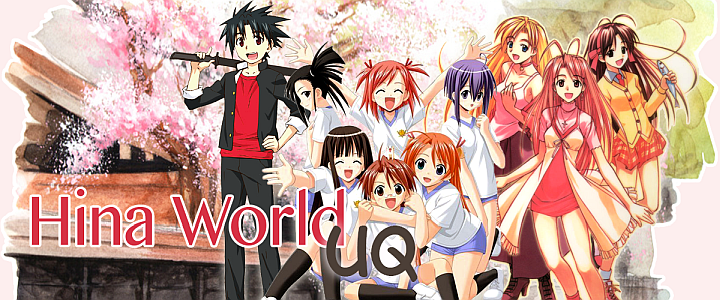
RoE 3.0+1.0: Thrice Upon a Time
21 October 2021
The last chapter of the famous saga, which has entered the history of animation, in an attempt to please fans disappointed by the previous endings.
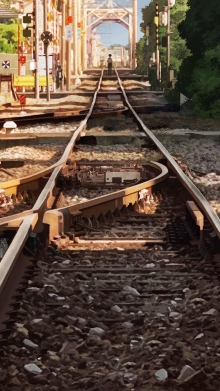 It’s almost cyclical that, after several years, we find ourselves commenting on the umpteenth finale of Neon Genesis Evangelion: before these pages were born there was the TV series and the End of Evangelion films, then in 2014 it was time for Sadamoto's manga and now with Rebuild we comes to what should (hopefully) be the definitive conclusion chosen by the director Hideaki Anno.
It’s almost cyclical that, after several years, we find ourselves commenting on the umpteenth finale of Neon Genesis Evangelion: before these pages were born there was the TV series and the End of Evangelion films, then in 2014 it was time for Sadamoto's manga and now with Rebuild we comes to what should (hopefully) be the definitive conclusion chosen by the director Hideaki Anno.And let's say right away that, if in the past my feelings were of melancholy, this time I consider them more a sort of "freedom".
So, for both the absence of a few months of the editorials of HW and the importance of the work, I have dwelt a little longer than usual in this write: Evangelion has crossed 3/4 of my life and the article will present some SPOILERS, therefore if someone have not yet seen the film I suggest proceeding with the vision before reading my opinions.
I no longer think it is necessary to bring back the plot of the story of Neon Genesis Evangelion, which is less or more always the same, but I think that’s advisable to “take a look” on where we were left, since the previous chapter of Rebuild, 3.0 You Can (Not) Redo, dates to 2012 and did not help at all to understand what’s hiding inside.
The film opens in a devastated Paris where a Willie team led by Ritsuko is trying to decontaminate the area from the remnants of the Near Third Impact, that has dyed all the lands red, and is attacked by the Nerv. In the meantime, after escaping the Fourth Impact thanks to the sacrifice of Kaworu Nagisa and after Asuka has recovered a Shinji traumatized by the death of his friend from the remains of the Eva-13, the two boys together with Rey Ayanami take refuge in Tokyo-3 town, one of the few remaining outposts of humanity.
This first part of the film is a bit of an anticipation of what the ending will be, telling us about a world that survived the Near Third Impact through the daily life of Tokyo-3. In this introductory "chapter", if we want to call it in that way, there is no trace of the Eva, who have always been at the center of the narrative to mark the days of the Children and the experts. Here we find old acquaintances who have become adults such as Toji, now a doctor and married to Hikari, and Kensuke as a handyman technician.
Already in this context, important directing choices are highlighted in the sign of continuity with the previous Evangelion series: the panoramic shots with the background voices of the characters, an element that has always been present and characteristic of the most introspective moments. In fact, let's not forget that 9 years have passed since the release of the previous film and even 26 years since the first episode of the TV series. In this period, animation technologies have undergone enormous evolutions between the advent of CG and digitization that have allowed different approaches to filming, seeing these directorial choices with an older flavor was not obvious at all.
The same can be said for the music of the always extraordinary Shiro Sagisu, the composer of each chapter of Evangelion. New songs are proposed in the film that are clearly inspired by the old OSTs but with more modern versions. However, there is the revival of some historical traces in their original versions at key moments in history (such as the famous Angel Attack of the fight scenes or the disturbing Borderline Case during introspective moments) which help to emphasize even more effectively the feeling of continuity I mentioned earlier.
Utada Hikaru remains also in last chapter the leading voice of the themes of Evangelion (since the eternal Zankoku na Tenshi no These and the cover of Fly Me to the Moon) but remains unusual the way in which, in the first two episodes of Rebuild, Beautiful World was presented with great fanfare, a song with decidedly more pop canons that seemed to represent the musical thread of the entire Rebuild (also given the clear reference, in the original titles, of the musical form of Japanese gagaku), and then suddenly changed register in the next two films with Sagura Nagashi and the latter One Last Kiss.
Personally, I have never been a lover of these changes on fly, precisely because they go against the idea of continuity, but the 5 years between the first and third films and the 9 years between the third and fourth must have influenced, both from a creative point of view and pure marketing (difficult to re-propose two other arrangements of a song published 14 years earlier).
And then we come to the main question: the ending?
After have follow Evangelion for almost thirty years and, as an old enthusiast fan, eviscerating any analysis and possible interpretation between the canonical series, spin-offs, films, rebuilds and manga, it is necessary to distinguish between what emerges from a more introspective reading and a simple "chronicle" of the facts.
I think that many spectators have come to the end of this story, which has extended over the years, with a diminished interest and where remains only the curiosity to know how it ends.
My feeling is that Hideaki Anno has decided to conclude the story with the last "type" of ending that was still missing, giving us the opportunity to close it as a sort of crossroads story in which you can decide the end that most pleases.
At the beginning, in the TV series they had opted for an introspective ending (we know, due to the lack of money on the part of Gainax) in which the events themselves lost their importance, assuming only the outline of what had led to the maturation of the hero. A few years later The End of Evangelion arrived to reveal to us what Anno's original intention was for the TV series finale with the advent of Third Impact and humanity being canceled leaving only Shiji and Asuka to survive as the new Adam and Eve.
And before getting to Rebuild we cannot fail to mention Sadamoto's manga that had given a conclusion to the story - of which we cannot know how much it was in tune with Rebuild since in 2014 the last movie was in full pre-production - with the most classic trick: the world reset. A world that is brought back to its initial state but in which the characters bring with them the personal maturation that will lead them to live their lives fully, as highlighted in Shinji's final monologue.
A happy ending certainly appreciated, in line with the less rough tones that the manga had always kept compared to the anime, but perhaps too banal and mainstream for the canons that Evangelion has accustomed us to.
The Rebuild ending (yeah, here we come!) represents, in summary, a further evolution of the manga's closure.
In the last film, with the Addictional Impact (why not Fifth?), Humanity is not simply reset but receives the "new genesis" referred to the title for 26 years and which had never been a complete development: the world goes back to being what it was before but without the Eva. The Evangelions no longer exist as the element that was only the cause of great suffering is removed, effectively closing the story and any possibility of reopening the cycle.
Accompanying and marking these different paths are the three female figures who in all editions have been alongside the protagonist: Asuka, Rei and Mari. Asuka is the one who in the End films is chosen as Shinji's "eva", Rei is the person who comes closest in the manga and gets in tune with him (even if the ending somewhat disappoints expectations from this point of view) and finally in the Rebuild we see Mari at his side, the only person with Shinji who retains the memories prior to the Additional Impact.
What is perplexing in this case is the way in which, especially between the TV series and Rebuild, there is a slightly too forced exchange between the figures who have always been the co-stars (Rei and Asuka) and the new arrived (Mari) who in a moment takes the stage: the character is undoubtedly a source of novelty and freshness, but I would have preferred a better "respect" for historical characters who are thrown into the background in the conclusion of the story.
Finally, there is the more introspective and author-related reading part.
It’s evident that the director has also changed and evolved over time, reflecting his most intimate feelings on his work. From the depression and sadness of the TV series and the first films we arrive at a maturation in which happiness and hope take the place of the feeling of resignation and despair that tormented the characters and, probably, also the author himself. As time went by, Anno came to fruition, became an established author, and happily married mangaka Moyoko Anno. And this is evident, for example, in the more introspective scenes (the epic tram views) where we no longer notice that sense of total oppression, anxiety and sadness, with almost dystopian colors, of the original series but also in the personality of the characters, more determined and less passive in facing situations (apart from Shinji whose depression is an integral part of the plot).
After so many years we are finally at the end credits and obviously the finale will be discussed and divide the fans for time to come. The hope is that Evangelion will now be handed over to the history books without being exhumed for marketing purposes: the story is over and now we can go on waiting for Hideaki Anno to show us new horizons of his incredible creativity.
Comments
You may be interested in...
-
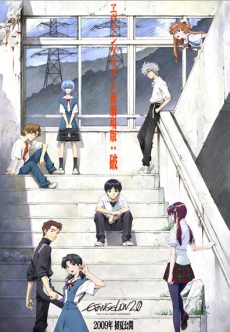
Rebuild of Evangelion, the new theatrical edition
20 December 2010
The final version of Evangelion from the director Hideaki Anno, it will the movies give us all the answers we are waiting for? -
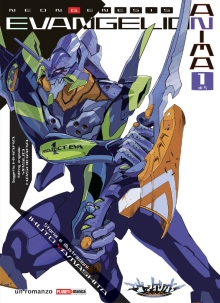
Neon Genesis Evangelion Anima
30 November 2020
Written and illustrated by Ikuto Yamashita, designer of the original series, an alternative ending arrives in light novel format compared to what was narrated in The End of Evangelion. -

The End of Evangelion
28 November 2014
The Evangelion manga ends, the history's Sadamoto personal point of view. -
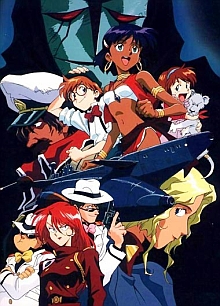
Nadia and The Secret of Blue Water
02 December 2013
The first masterpiece of Hideaki Anno, between legends and literature best seller. -
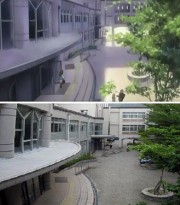
Location Hunting, the new otaku’s frontier
03 May 2010
The research of the real place where the anime stories take place is causing some problems: it's an important resource or only a nuisance?